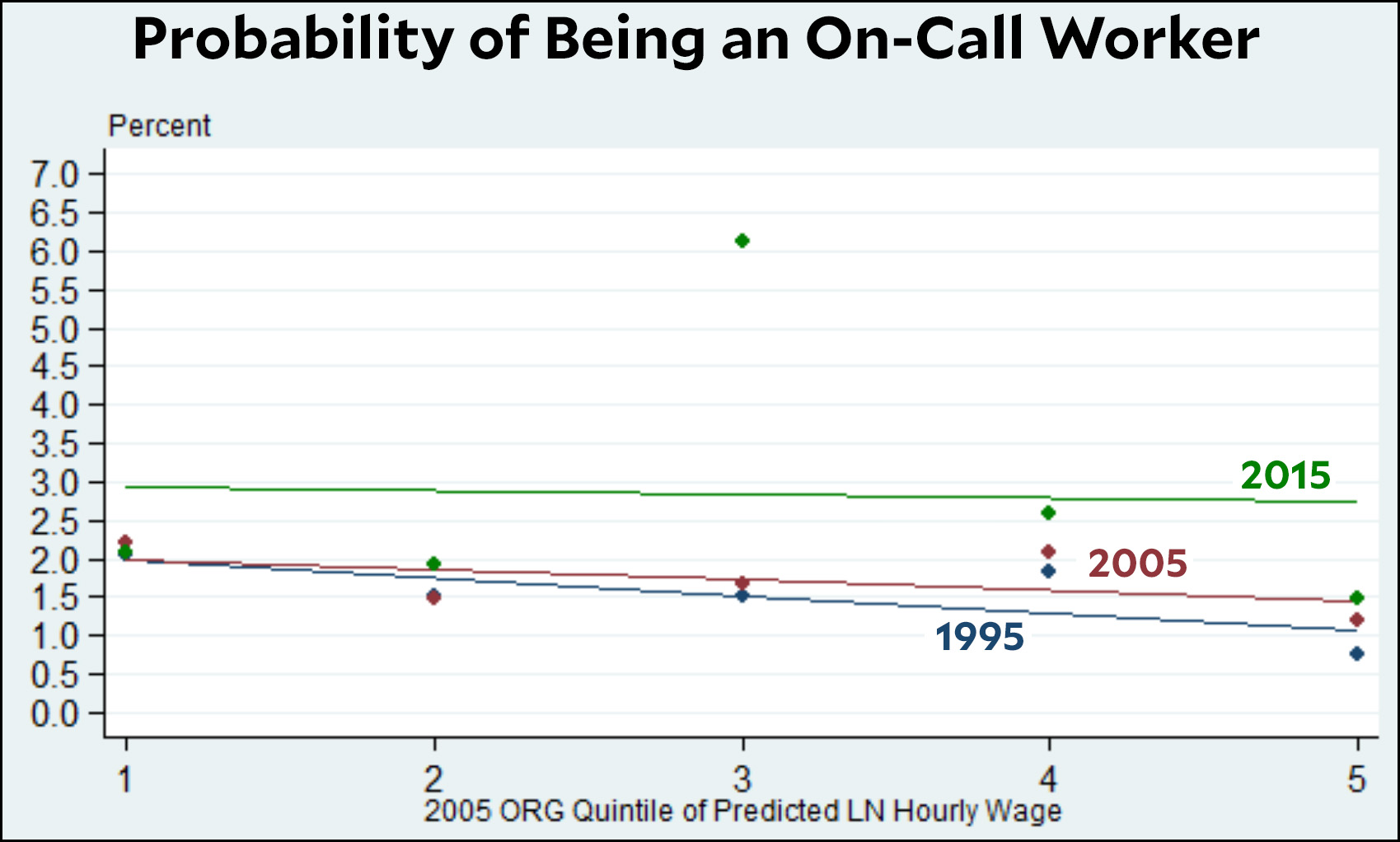A few days ago I took a look at whether the gig economy was really “exploding,” as an LA Times columnist had suggested. Neither the BLS nor anyone else directly tracks this, so I took a look at the number of part-time workers as a rough proxy and concluded that nothing much was going on. But I promised to report back if I got more information.
Today, another LA Times article mentions a Katz and Krueger paper in 2015 about “alternative work arrangements.” The category that’s closest to gig work is “on-call worker,” and here’s their chart:

The slope of the lines doesn’t really matter. What matters is that the 2015 line is higher than either the 1995 or 2005 lines. Gig workers are mostly in the bottom half of the income spectrum, and in quintiles 1 and 2 the share of on-call workers has gone up from about 2 percent to 3 percent of the labor force.
How big an increase is that? By one measure, it’s one percentage point. By another, it’s an increase of 50 percent. Basically, growth in the gig economy has been fairly robust, but it’s starting from a pretty low base. It’s still not a very big factor in the overall economy.

















